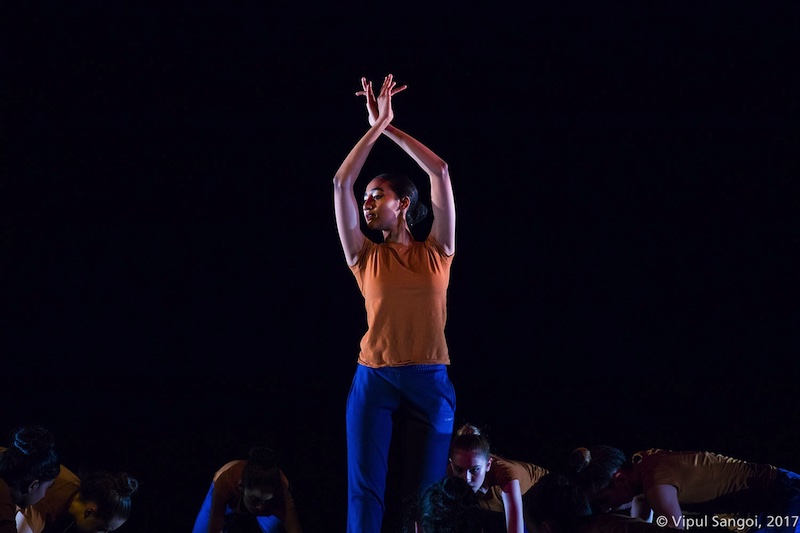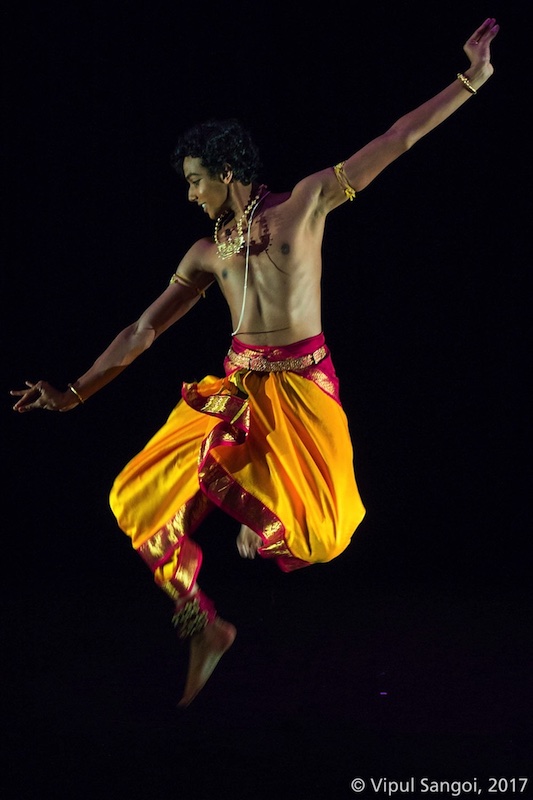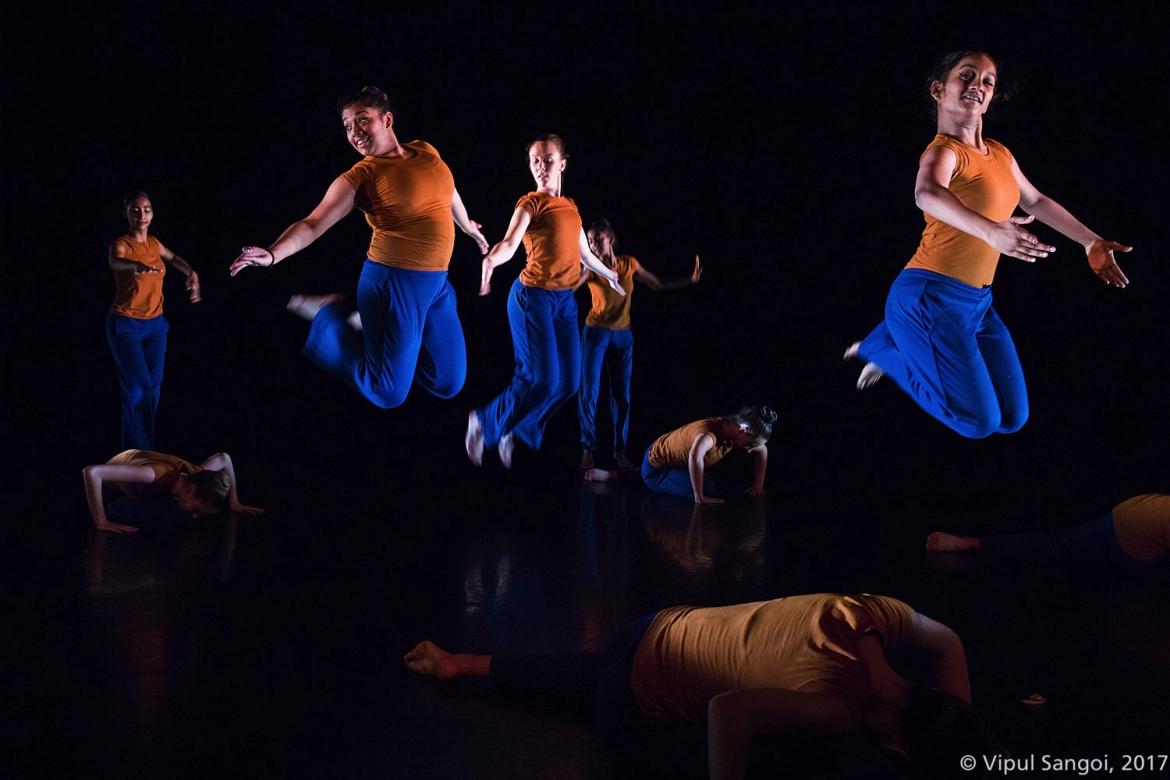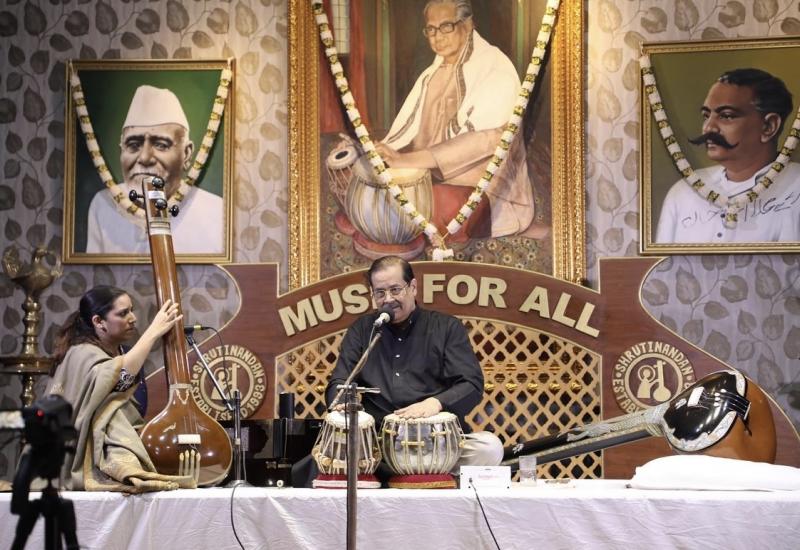Yuva Gati – New Horizons for Young Dancers
’…a world view of living by art.’ Yuva Gati (‘Youth Movement’), the South Asian strand of the Centres for Advanced Training, is now in its tenth year. Magdalen Gorringe reports.
It’s a cold weekend in the middle of February. As I climb up the steps towards the studios of the Midlands dance agency DanceXchange in central Birmingham, I am greeted by the sound of the Natesa Khautvom. I step over boxes of costumes made from silk saris, and peer into the studios. In one studio about twenty young people dressed in tracksuit bottoms and T-shirts, or in salwar kameez, learn to embody the different iconography of Lord Siva. In the studio next door, another group similarly attired is put through their paces in a contemporary dance class. In yet another studio a group of kathak dancers are at work. This is Yuva Gati, the South Asian dance strand of the Centres for Advanced Training (CATs) set up across the UK.
The CATs are funded the Department for Education’s Music and Dance Scheme (MDS). They exist to ‘to help identify, and assist, children with exceptional potential… to benefit from world-class specialist training as part of a broad and balanced education. This will enable them, if they choose, to proceed towards self-sustaining careers in music and dance.’* CATs were originally established in 2004, and in terms of dance, focused only on contemporary dance and ballet. The MDS has since rolled out CATs offering training in other dance and movement styles, including a single centre, Yuva Gati, that focuses on kathak and bharatanatyam.
The South Asian dance CAT – named Yuva Gati (‘Youth Movement’) in 2013 – was established in 2008 and is run as a partnership between Dance Xchange and Birmingham’s South Asian arts organisation Sampad Arts. Unlike other CATs where participants are drawn from the local area and meet for a day a week throughout term time, Yuva Gati students are recruited nationally and participate in residential intensives during school half terms and Easter and summer holidays. The timetables for these intensives are packed with a variety of technique classes, repertory classes, as well as classes in other movement styles such as chau, sattriya and Western contemporary dance. In the evenings students watch performances, or attend talks given by visiting artists. Once a year students audition to take part in a project working with dancers from the kathak, bharatanatyam and contemporary dance strands of CAT choreographed by a guest artist. During term-time they work in their home town with their ‘home tutors’ or regular gurus.
The integration of training in a range of movement styles gives participants a broader understanding of their bodies, which they use to inform their performance of classical technique. Recent Yuva Gati graduate, bharatanatyam dancer Sundaresan Ramesh describes how the programme introduced him to yoga. ‘I used to hate it’ he confessed ‘because my body was stiff. But now I enjoy it and do it at home.’ He feels that Yuva Gati has given him ‘a better understanding of my body - which muscles need to be worked and which need to be stretched.’ Tulani Kayani-Skeef, a kathak dancer in her last year on the scheme feels similarly that being on Yuva Gati has ‘made me a lot more versatile… more skilful and open to learning new things… the training pushes me outside my comfort zone with the longer hours of intense dancing. You get a sense of what life might be like as a professional dancer’.

This ‘sense of life as a professional dancer’ is critical aspect of the programme. For Yuva Gati Director, Anusha Subramanyam, ‘beyond a physical dance training, Yuva Gati gives a world view of living by art’ and in this way ‘changes the landscape of the entire South Asian dance sector.’ The programme’s role in changing perceptions is endorsed by Ramesh and Kayani-Skeef. Both cite a key advantage of Yuva Gati as being the way in which it has expanded their horizons, and enabled them to encounter experiences – of different dance styles, of meeting a range of dance professionals – ‘that they would never otherwise have had. A highlight for Kayani-Skeef was ‘going to see Mavin Khoo perform [contemporary dance]. I had never seen anything like that before.’ Ramesh likewise speaks of how Yuva Gati gave him ‘exposure to things I wouldn’t normally experience’. He describes the impact made on him by the opportunity to meet Chennai based bharatanatyam dancer Christopher Gurusamy, whom Subramanyam had invited to speak to the students. ‘That’s how I understood how to properly jump. By observing his power and preparation.’

Photo: Vipul Sangoi
Now it is in its tenth year, and Yuva Gati graduates have forged unique pathways in dance. Vidya Patel is probably the best known, graduating from CAT to go on to win the South Asian Dance Category final in BBC Young Dancer 2015. Uma Venkataraman, an early graduate, impressively combines her work as a medic with an enviable career as a bharatanatyam soloist. Ramesh is now working with the National Youth Dance Company (NYDC) – and who knows where this experience will take him, or where NYDC’s exposure to Ramesh’s commitment to classical bharatanatyam will take the company. For Subramanyam this is another example of how Yuva Gati serves to influence the British dance ecology.
For all these successes, Ramesh and Kayani-Skeef leave our sector with a challenge. While their contemporary counterparts have an obvious route post CAT of vocational school followed by pursuit of work in a dance company, for Yuva Gati graduates there is no such clear trajectory. Asked, given a magic wand, which one thing would make most difference to their future as dancers in the UK, Kayani-Skeef replied ‘A kathak school in London, just for kathak’. Ramesh wished for ‘a touring bharatanatyam company in the UK’. These things have long been sought and attempts to accomplish them have previously been made. It looks like it is time for the sector to try again.
---------------------------------------------------
*National Dance CATs website, available at https://www.nationaldancecats.co.uk/what-are-cats/(Accessed 15.2.2018)
This article draws on interviews conducted by the author on behalf of Pulse with Tulani Kayani-Skeef, Sundaresan Ramesh and Anusha Subramanyam.



















